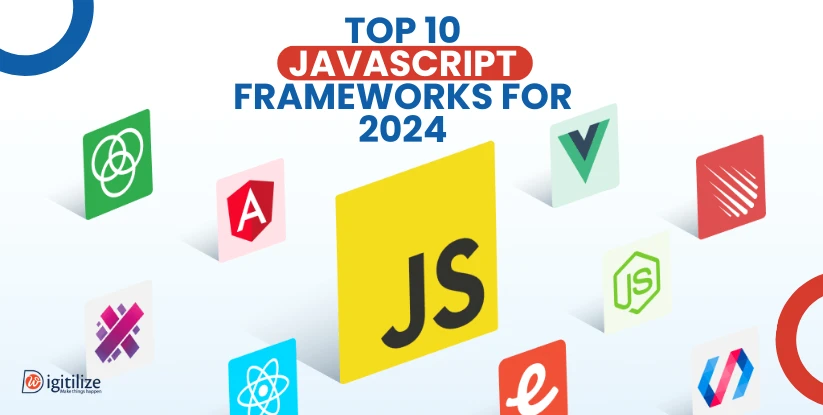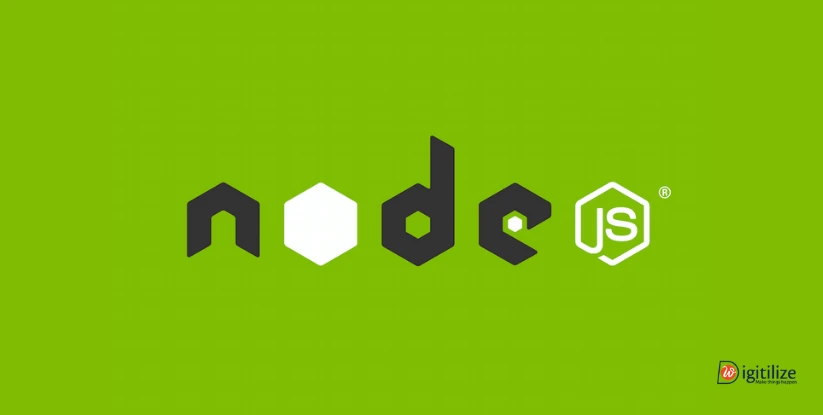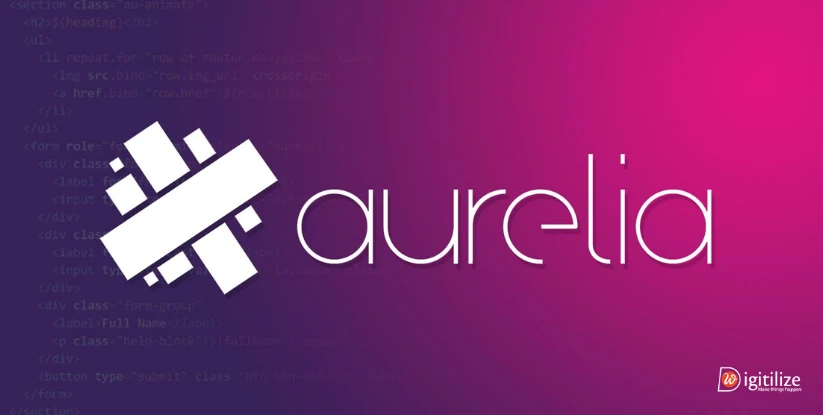Top 10 JavaScript Frameworks for 2024
 JavaScript supports event-driven, functional, and imperative programming styles. Initially, JavaScript was primarily used on the client-side. However, it’s still widely employed as a server-side programming language today. In essence, JavaScript serves as the web’s primary language. Therefore, to enhance your efficiency in learning web programming, you must acquaint yourself with the top JavaScript Frameworks for web development and advantages of top JavaScript frameworks 2024.
JavaScript supports event-driven, functional, and imperative programming styles. Initially, JavaScript was primarily used on the client-side. However, it’s still widely employed as a server-side programming language today. In essence, JavaScript serves as the web’s primary language. Therefore, to enhance your efficiency in learning web programming, you must acquaint yourself with the top JavaScript Frameworks for web development and advantages of top JavaScript frameworks 2024.
Popular JavaScript Frameworks for 2024
Web developers should be well-acquainted with the most top JavaScript frameworks 2024 for Web Development because JavaScript serves as the language of the Internet. This familiarity ensures you stay current with industry standards. Moreover, if you’re new to the field of web development, it’s crucial to grasp the most favored JavaScript Framework for Web Development to keep pace with the latest industry innovations.-
React.js
Features:
- Virtual DOM
- One-way data binding
- Declarative UI
- JSX
- Component-based
-
Vue.js
Features:
- Adaptability
- Less complex
- Vue CLI
- HTML-based templates
-
Angular.js
Features:
- Data binding
- Dependency injection
- AngularJS can be used for creating Rich Internet Applications (RIA).
- Code generation
-
Ember js
Features:
- Reusable and upkeep-free javascript web applications
- Initializers for instances
- Routes as essential elements
- Also an ember inspector
-
Node.js
 The open-source Node.js server-side platform is built upon the JavaScript Engine from Google Chrome. This allows JavaScript scripts to run on the Node.js runtime environment for backend development. Node.js is now powering over 30 million websites, establishing itself as one of the most extensively used cross-platform runtime environments for executing JavaScript code. This platform works well for managing content, constructing ecommerce marketplaces, and conducting online activities. Its lightweight and efficient I/O technology is characterized by its asynchronous, single-threaded, and non-blocking nature. Moreover, Node.js boasts the world’s largest open-source library ecosystem, known as npm.
The open-source Node.js server-side platform is built upon the JavaScript Engine from Google Chrome. This allows JavaScript scripts to run on the Node.js runtime environment for backend development. Node.js is now powering over 30 million websites, establishing itself as one of the most extensively used cross-platform runtime environments for executing JavaScript code. This platform works well for managing content, constructing ecommerce marketplaces, and conducting online activities. Its lightweight and efficient I/O technology is characterized by its asynchronous, single-threaded, and non-blocking nature. Moreover, Node.js boasts the world’s largest open-source library ecosystem, known as npm.
Features:
- Cross-platform capabilities
- Scalable
- Asynchronous and non-blocking
- Event-driven architecture
- Quick data streaming
-
Backbone js
Features:
- Conveniently minded
- A number of extensions
- Logical development
- Simple library requirements
- Lightweight and compact
-
Polymer js
Features:
- Possesses polyfills
- Suitable for developing mobile applications
- Improved reusability
- Greater adaptability
- Create and use components
- Make use of native browser technologies
-
Svelte
Features:
- Integrated accessibility
- Brief code
- Automatic component export
- Really responsive
-
MeteoJs
Features:
-
- Full-stack solution
- Best for beginning
- Cross-platform
-
Aurelia Js
 In order to create effective online and mobile apps, software development service providers can use the contemporary, open-source Aurelia JS UI (User Interface) framework. This framework enhances JavaScript’s capabilities, allowing programmers to utilize their JavaScript code more effectively. Because Aurelia is a non-intrusive framework, using it doesn’t need the creation of any special code, tags, or keywords. Developers of mobile applications who rely exclusively on JavaScript now have Aurelia at their disposal. So, now all you need to do is write some straightforward JavaScript code and use Aurelia to run it, and you’ll have access to far more sophisticated features than you ever imagined.
In order to create effective online and mobile apps, software development service providers can use the contemporary, open-source Aurelia JS UI (User Interface) framework. This framework enhances JavaScript’s capabilities, allowing programmers to utilize their JavaScript code more effectively. Because Aurelia is a non-intrusive framework, using it doesn’t need the creation of any special code, tags, or keywords. Developers of mobile applications who rely exclusively on JavaScript now have Aurelia at their disposal. So, now all you need to do is write some straightforward JavaScript code and use Aurelia to run it, and you’ll have access to far more sophisticated features than you ever imagined.
Features:
- Support for several languages
- According to the MIT license
- Extensibility
- Commercial assistance
- Components
Conclusion
You should be familiar with JavaScript as a web developer since you will use it whether you are working on the front-end or the back-end of a website. It is therefore best to understand JavaScript’s principles in a straightforward manner. Because of its user-friendliness and ability to make the code simple, JavaScript is a framework you should understand if you want to work on it. Thus, we have covered the top 10 most well-liked best JavaScript frameworks 2024 for web development in this post, which every developer should be aware of. It will be simple for you to understand all of the future trends in JavaScript frameworks 2024 after you have mastered the fundamentals. Since they are all built on JavaScript and their primary goal is to simplify and speed up the process, they are all compatible.Follow us
FAQ
Frequently Asked Questions
On the web, JavaScript is essentially used everywhere, and this situation is not expected to alter very soon. For the eleventh consecutive year, the developer poll indicates that this is the most widely used programming language.
Angular is the most difficult framework to learn. In addition to having a solid grasp of TypeScript, you must keep in mind that Angular projects have a rigid structure in order to operate with this framework.
Next.js is a React framework that adds features like server-side rendering and routing to React applications. It simplifies the process of building React applications, making them more performant and SEO-friendly.
Yes, DigitilizeWeb offers migration services to help clients transition from older frameworks to newer ones. This ensures that projects stay up-to-date with the latest technologies and best practices.
We place a strong emphasis on security. They implement industry best practices, conduct regular security audits, and follow secure coding standards to ensure the robustness and safety of web applications.
Yes, we have expertise in integrating third-party APIs and services into JavaScript-based applications. They ensure smooth and secure communication between the application and external services.

